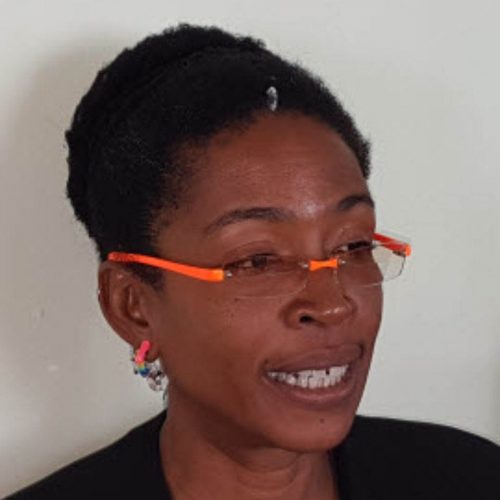Responding to calls by local Attorney-at-Law Elizabeth Deane-Hughes to postpone the planned public consultation for the gas-to-power project until the expiry of the mandatory 60 days comments/objections period, President of ExxonMobil Guyana, Alistair Routledge has said that the sessions are intended to be complementary to the review process and should proceed.
Deane-Hughes, in identical letters on May 5th, addressed to Routledge and Executive Director of the Environmental Protection Agency (EPA) Kemraj Parsram, highlighted a number of concerns with the proposed consultations for the gas-to-power project. She argued that citizens should be allowed, uninterrupted, the time to comb through the voluminous document and then raise their concerns.

“…[the PR campaign] adds nothing to the already submitted EIA&EIS but may act as a distraction factor and even muddy the waters of good intentions. EEPGL and/or ExxonMobil is not in a competitive process for the issuance of permits for the gas-to-energy pipeline so a mere postponement will not affect the decision made. In fact, if they chose to conduct their campaign in the June-August 2022 period this can be comprehended as a sign of respect and goodwill for the people of Guyana, a country where they are concentrating their current future developments and investments inter alia,” her letter had said.
In a reply dated May 11, 2022, Routledge explained that the Environmental Impact Assessment (EIA) Disclosure Sessions are designed to allow the independent Third-Party Consultant, who conducts the EIA, an opportunity to share with community members their findings of the potential impacts of the project.
“These sessions are intended to be complementary to the EIA review process and provide stakeholders with an impartial summary of the project, and the opportunity to ask questions and share concerns. This exchange is an important part of stakeholder engagement and open communication, and we believe that these meetings should proceed as planned in the interest of maximising community engagement within the 60 days set out by the EPA,” he explained.
On April 20, ExxonMobil through its consultant Environmental Resource Management (ERM) submitted the environmental study for the US$1.3b gas-to-shore project which the government hopes will lead to vastly lower energy costs that would enable a spurt in manufacturing. There have been doubts over the country’s execution capacity and whether a feasibility study has been done for this massive project which would be the biggest in the country’s history.
The submission of the environmental study has triggered the 60-day public review process. In accordance with Section 11 (10) of the Environmental Protection Act, Cap. 20:05, members of the public can review the EIA and make written submissions to the Environmental Protection Agency, as they consider appropriate. All submissions are to be addressed to the Executive Director of the EPA and sent to the Ganges Street, Sophia office or emailed to [email protected].
That 60 days process comes to an end on June 18, 2022.
Exxon, through public notices in the press, advertised that face-to-face sessions will be held with information on the gas-to-energy project, the EPA environmental authorization process and the findings from the assessment to “support public awareness.” In total, there are 11 such sessions scheduled.
The first session was held at Lachmansingh Primary School, West Coast Berbice on Monday, May 9, 2022, and the final session at Patentia Primary, West Bank Demerara on May 20.
In her letter, Deane-Hughes argued that if an alternative route with the pipeline landing at Leonora and running along the Boerasirie dam owned by the Government of Guyana, is used then there will be no need to acquire private property. She, however, did not provide a source of this information.
In response to this contention, Routledge informed her that the Government of Guyana is leading the effort on the location of the pipeline.
He added “…our understanding is that the government has completed a comprehensive survey of the potential route, is in the process of reviewing the data and will be engaging any affected landowners in the near future. I would like to highlight, as you may read in the EIA, that ExxonMobil Guyana has committed to supporting the government in its resettlement and livelihood restoration efforts should this be required.”
According to the government, the pipeline is expected to land at Crane/Nouvelle Flanders, West Coast Demerara and make its way to Wales on the West Bank of Demerara.
Exxon’s President said that he believes that the project will deliver significant benefits to the people of Guyana through reduced costs, lower emissions and improved reliability of electricity supply. He also told Deane-Hughes that the company’s Gas to Energy Project Socioeconomic Management Lead, Natasha Pyfrom has been asked to follow up with her relating to any additional requests for information and explanations.
The government says the project will involve capturing associated gas produced from crude oil production operations on the Liza Phase 1 (Destiny) and Liza Phase 2 (Unity) Floating, Production, Storage, and Offloading (FPSO) vessels, transporting approximately 50 million standard cubic feet per day (MMscfd; 1.4 million standard cubic meters per day [MMsm3/d]) of gas via a subsea pipeline and then an onshore pipeline to a natural gas liquids (NGL) processing plant (NGL Plant), treating the gas to remove NGLs for sale to third parties, and ultimately delivering dry gas meeting government specifications for use at the Power Plant.
The project includes the construction and operation of a natural gas pipeline from the Liza Phase 1 (Destiny) and Liza Phase 2 (Unity) FPSO vessels via a subsea line and then an onshore natural gas pipeline to an onshore NGL Plant. The pipeline will transport up to approximately 50 MMscfd of dry gas to the NGL Plant. The NGL Plant will drop the pressure of the gas; dehydrate the gas; separate out the NGLs (i.e., propane, butane, and pentanes+) for sale to third parties; and treat the remaining “dry” gas to the specifications appropriate for use as fuel or raw materials by third parties.






